Superstrata raised in excess of $5 million on the crowdfunding site Indiegogo for the Superstrata Classic.
The company behind Superstrata, Arevo, makes carbon parts for aerospace client Airbus, so it has an impressive tech and engineering story to tell.
A bike made using a new eco-friendly material and an unconventional design got us excited when it featured as a Bike of the Week in October 2022.
Although the Superstrata intrigues with its distinct frame material and manufacturing style, testing reveals a bike with a number of fundamental design and component choice missteps.
In short, at this time it’s a bike to avoid.
Superstrata Classic specifications and details

The frame is made from what Superstrata calls “industrial grade thermoplastic carbon”. This uses a thermoplastic filament composed of carbon fibre and nylon polymer.
This is claimed to be tougher, more impact resistant and – importantly – takes less energy to manufacture than traditional carbon-resin constructions used commonly in bike frames.
Arevo also says thermoplastic is much easier to recycle.
The frames are made in-house and can be customised to suit the individual buyer.
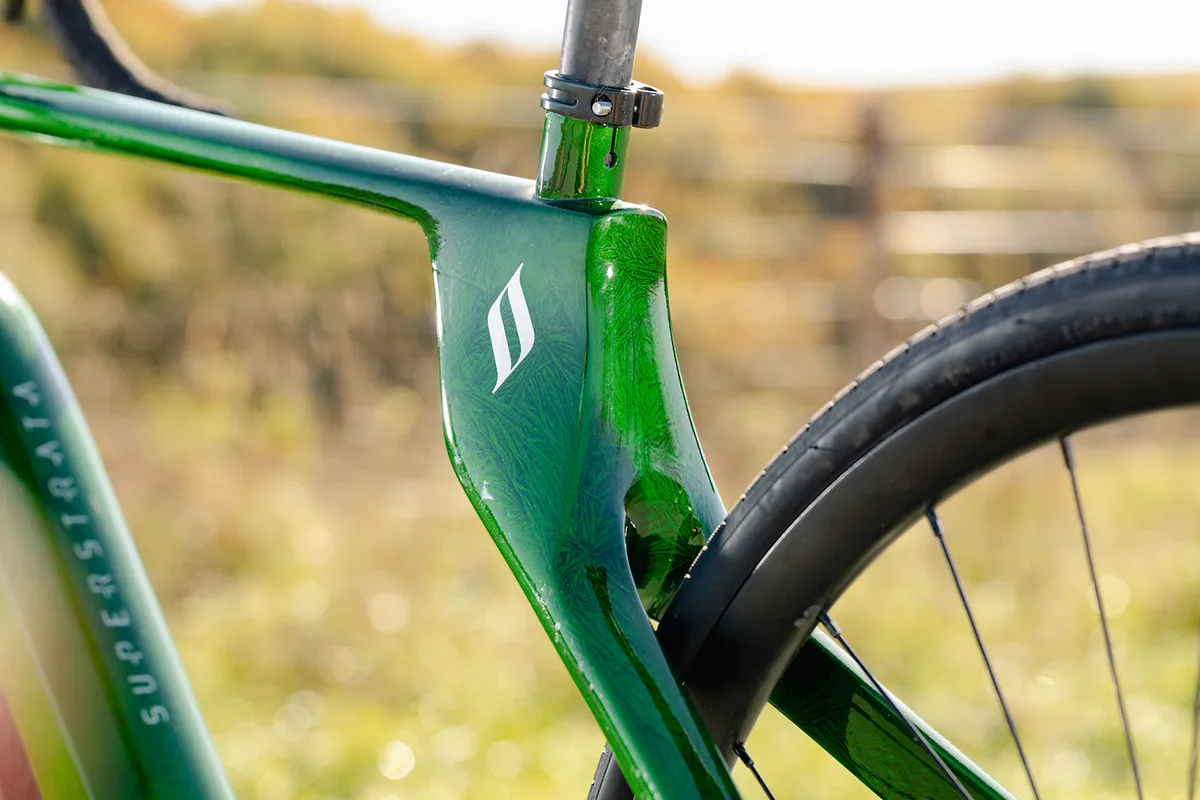
Rear tyre clearances are generous, as are the forks.The fitting system on Superstrata’s website enables you to input your dimensions (height, inseam, arm span, leg length), with the frame then made to fit your requirements.
It then recommends the optimal stem, crank length, and bar width to accompany the frame.
The stand-out feature of the frame is the lack of a seat tube. Superstrata claims this was “to challenge not only our own technology but what is possible in carbon fibre bicycle manufacturing”.

I’ve encountered frames without a seat tube before – the Kestrel 500 ems, 4000 and Airfoil from the mid-noughties stand out.
Superstrata claims the seat tube omission saves weight because an entire tube is eliminated.
That said, a claimed frame weight of 1.34kg is heavy for a modern road bike, while the test bike tips the scales at a portly 11.64kg.
Superstrata Classic frameset and geometry
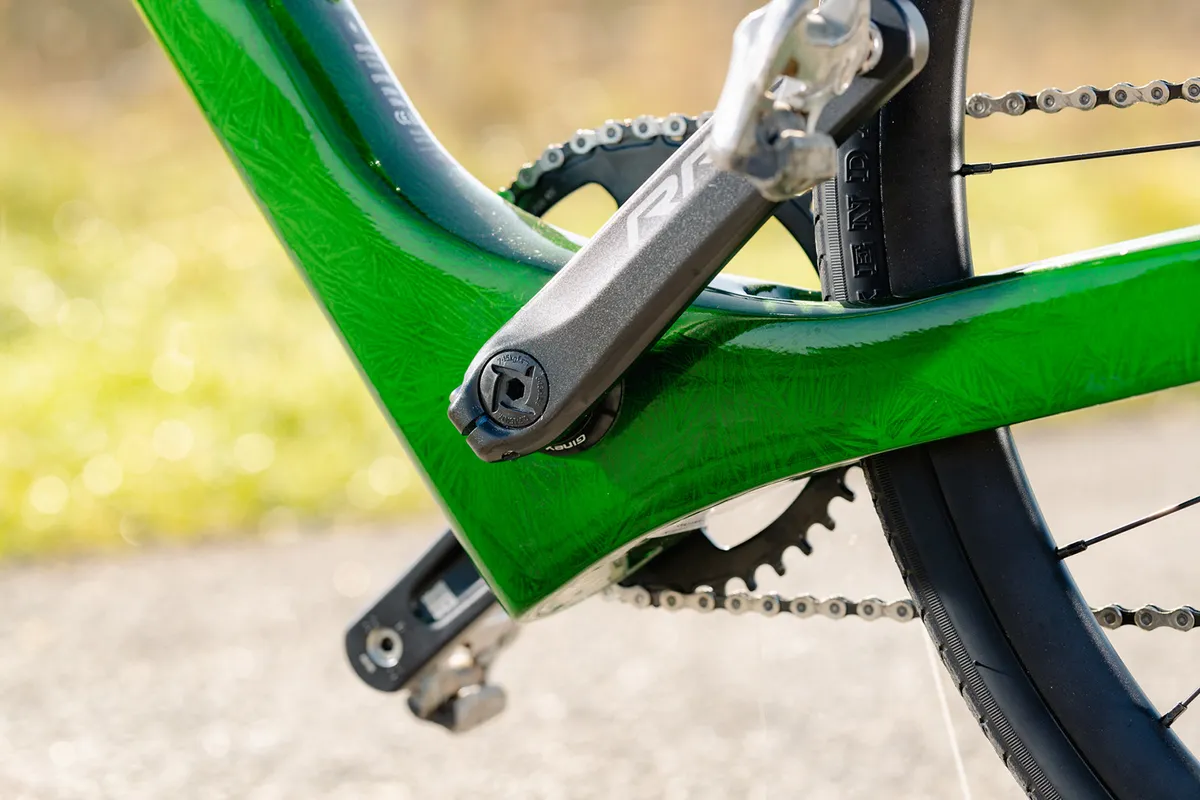
The frameset looks interesting, but the elimination of a seat tube leads to a compromise when it comes to drivetrain options. Namely, you can’t have it with a traditional 2x setup because there’s nowhere to mount the derailleur.

The seatpost has very limited adjustability. The ‘seat tube’ is 156mm deep, which limits downward adjustability unless you trim the seatpost.
With the stock post, you can get less than 50mm of upward adjustment, taking into account the safety limit line.
The stock post our bike arrived with wouldn’t go high enough to suit my saddle height, so I had to replace it with one of my own posts.
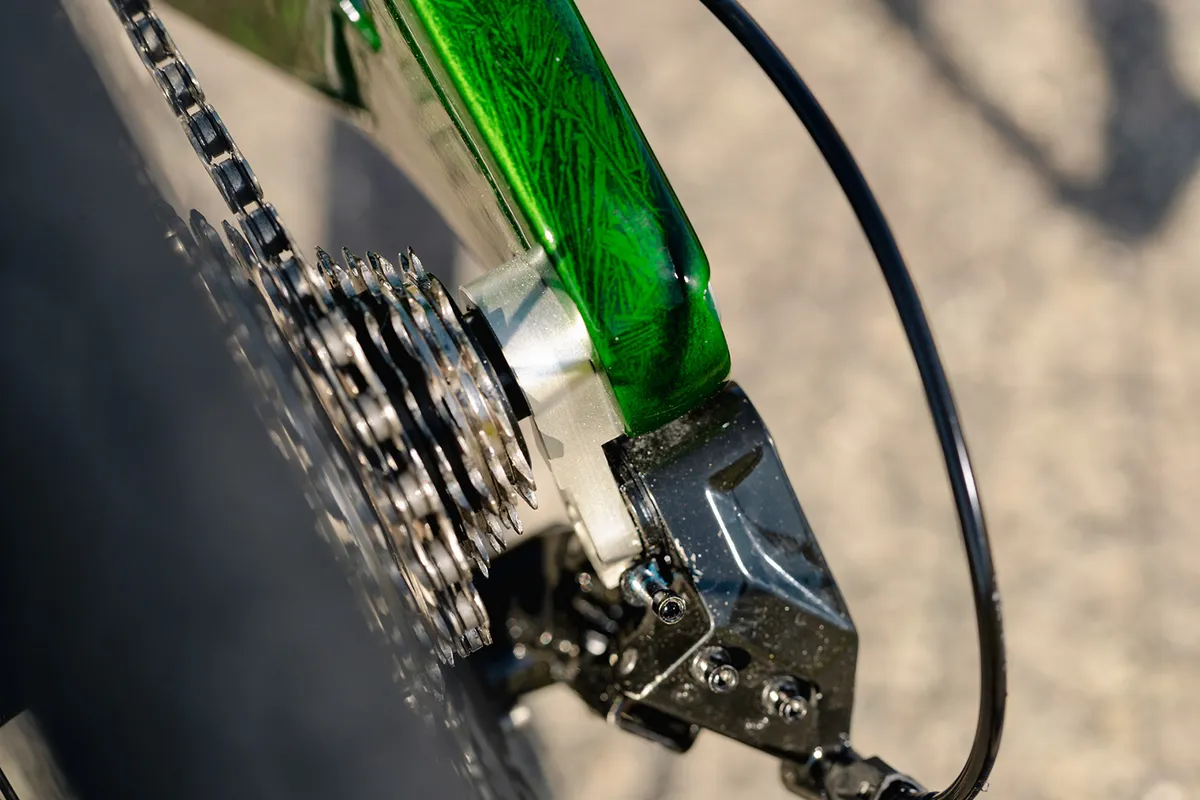
The rear end of the bike is incredibly wide, using a 185mm thru-axle. This means either side of the rear stays features thick alloy inserts to take the spacing down to standard 142mm road spacing.
There doesn’t seem to be any practical application for this, aside from being a hangover from the electric bike version of the Superstrata, which requires a wider spacing to incorporate the hub-based motor system.
Superstrata doesn’t state geometry figures – which is partly down to the custom-built nature of the bike.

My measure of the head angle equates to around 68 degrees. That’s erring towards mountain-bike slack – typical road bike head tube angles sit at around 72 to 73 degrees.
Combined with the 47mm fork offset, plus 700 x 28c tyres, this works out to an 88mm trail (where the tyre’s contact point ‘trails’ behind the steering axis).
A shorter trail figure makes for a fast-handling bike; more trail slows down the steering response. In comparison to a great-handling road bike such as Cannondale’s SuperSix EVO, it’s a full 30mm longer.
The seat tube is angled at an effective 76 degrees – steeper than most road bikes, which should help to put the rider over the cranks.
The wheelbase is quite long at 1,032mm and the chainstays, at 432mm, are also longer than what’s considered the norm on a performance road bike.
Superstrata Classic ride impressions
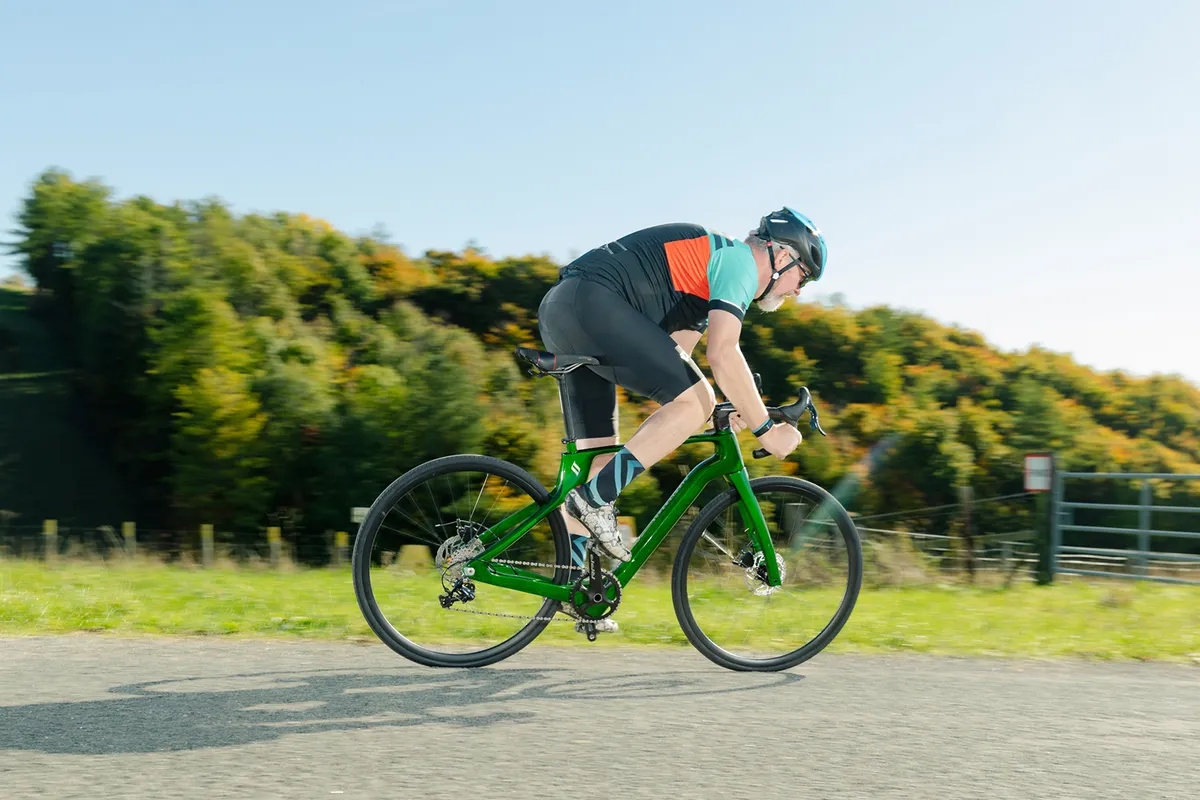
The Superstrata’s overall ride is adequate. Despite the missing seat tube, there's a decent amount of frame stiffness, which helps keep things stable when sprinting or putting down the watts on sharp punchy climbs.
Welcomingly, it feels quite comfortable despite that stiffness.
However, this is undermined by a number of factors.
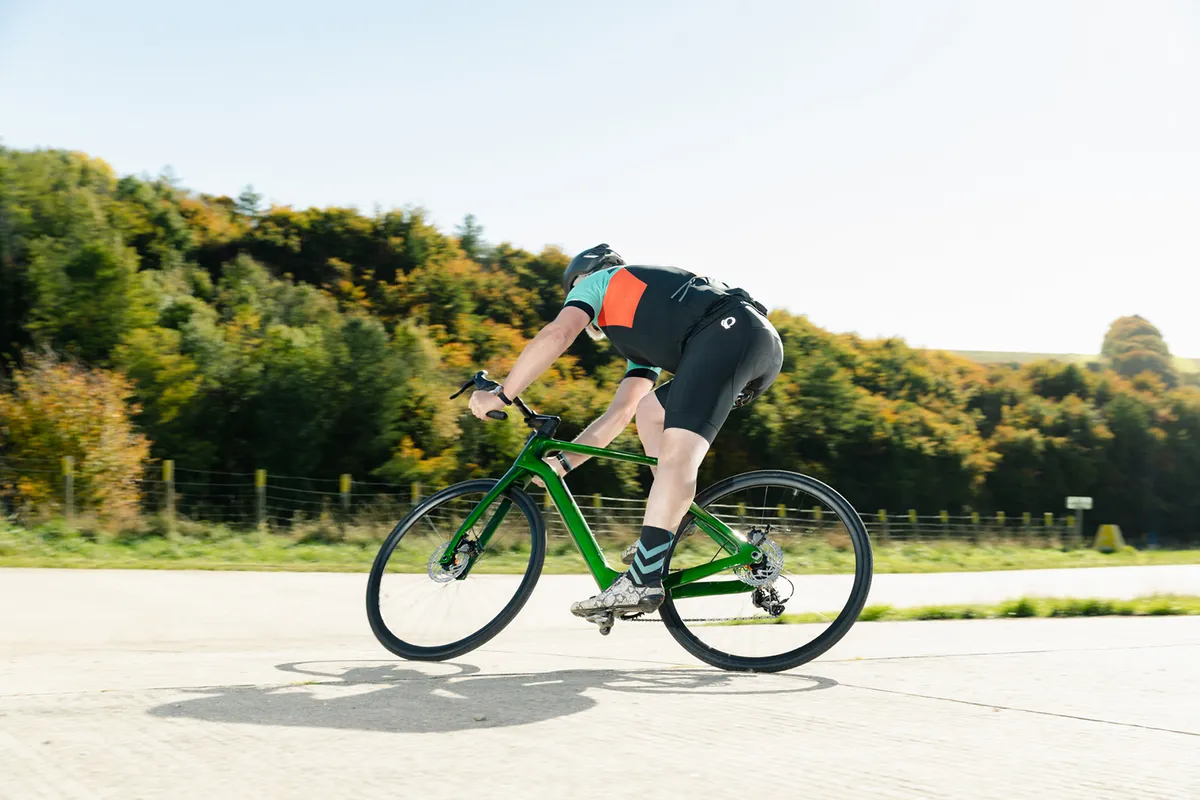
Any hope for the bike's handling is killed by the excess weight and inferior wheels and tyres, and the odd head-angle geometry choice exacerbates that.
Thanks to the 68-degree head tube and 88mm trail, the steering is slow and the handling ponderous.
The Superstrata Classic doesn’t respond well to accelerations, with the weight in the wheels and sluggish tyres making the frame stiffness a largely moot point.
It’s outwardly a road bike, but the overall 11.64kg weight is excessive even compared to a budget gravel bike, never mind a $2,800 road bike.
Descending requires care, the slack head angle making for a bike that feels keen to push forward and understeer.
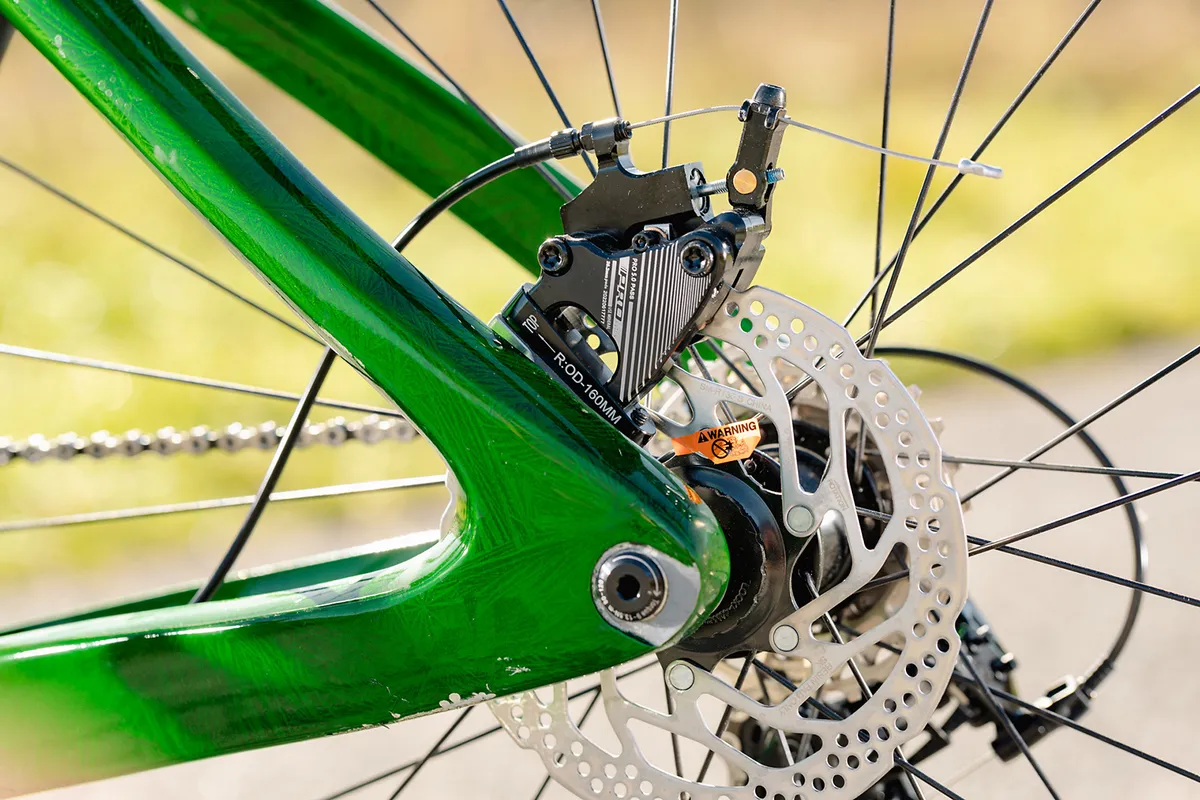
Unfortunately, the poor braking means correcting that to balance the handling is by no means easy.
This is compounded by tyres that don’t offer the sort of biting grip that gives confidence when leaning into a corner.
I struggled to lean in to increase my attack angle towards apexes, which makes the experience – especially when the road conditions are less than perfect – vague and nervous.
Superstrata Classic finishing kit

In short, the equipment levels aren’t up to scratch for a $2,800 bike.
Up-front, things start very well. FSA’s clever ACR headset and stem combo keeps cables routed internally and looks clean and tidy.
The internal ACR system has been adopted widely on some of the very best road bikes, including our 2022 performance Bike of the Year, the Merida Scultura Team.
The FSA Energy bar is well-shaped, featuring a compact drop and flattened ovalised tops.
At the back, an inline Controltech seatpost is topped with a very comfortable Selle Italia Model X BB FEC saddle.

However, when you get into the meat of the package, things start to falter.
The Pro (distinct from PRO, Shimano’s component arm) 5.0 Pass mechanical disc brakes are woeful.
The braking action starts off with a scuffing engagement with the rotor that doesn’t really change until you pull the lever fully to the bar. Then, the brake grabs the rotor and pulses in its application, rather than stopping you consistently and predictably.
Compared to the latest hydraulic disc brakes from the major players (Shimano, SRAM, Campagnolo and others), they are simply not good enough.
They even struggle to match the performance of budget cable disc brakes from the likes of Tektro and Avid – or a good set of rim brakes for that matter.

The drivetrain comes with a mix of L-Twoo components: an R9 rear derailleur and G9 shifters, which are matched to a two-piece RPP chainset and an 11-speed Sunshine 11-28t cassette.
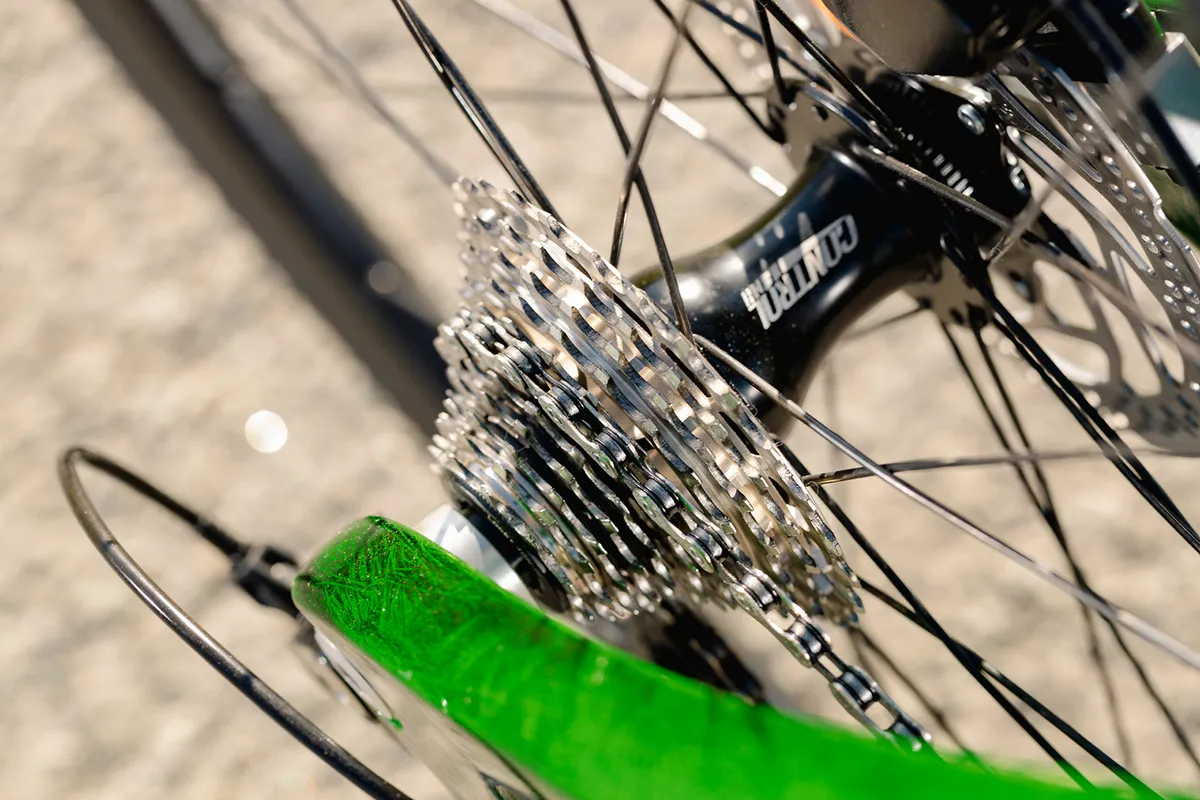
The highlight of this setup is the rear cassette. It’s a CNC-machined affair, with the top four sprockets machined from one piece of aluminium – SRAM Red-style. The teeth are nicely shaped and ramped, which should help deliver crisp shifting.
RPP’s single ring also does its job and is stiff enough to handle high-power efforts, but it’s unremarkable in terms of its performance.
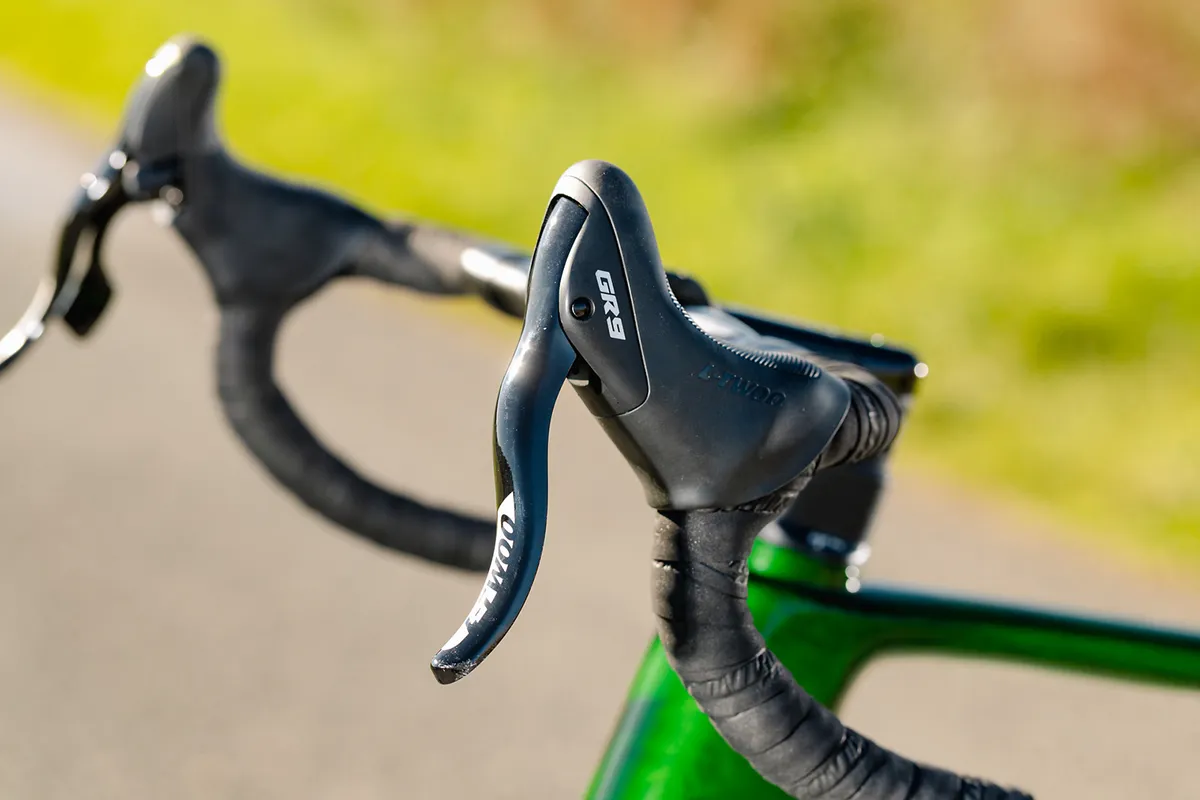
Shifting feels very much like mechanical shifting from the early 1990s. In fact, the shifting layout on the G9 lever mimics Campagnolo’s original Ergo design from 1992.
A secondary lever behind the brake lever takes care of upshifts, and a thumb trigger on the inside of the lever handles downshifts.
In itself, this is fine. Campagnolo’s Ergo shift design was good back then and can be traced through to today. You could argue that Shimano’s STI-style shifter concept has remained (mostly) unchanged since it first broke cover.

However, L-Twoo has positioned the downshift trigger so high on the hood that it’s impossible to reach when you are down in the drops. Although I have large hands, this is an ergonomic issue I thought was confined to the history books.
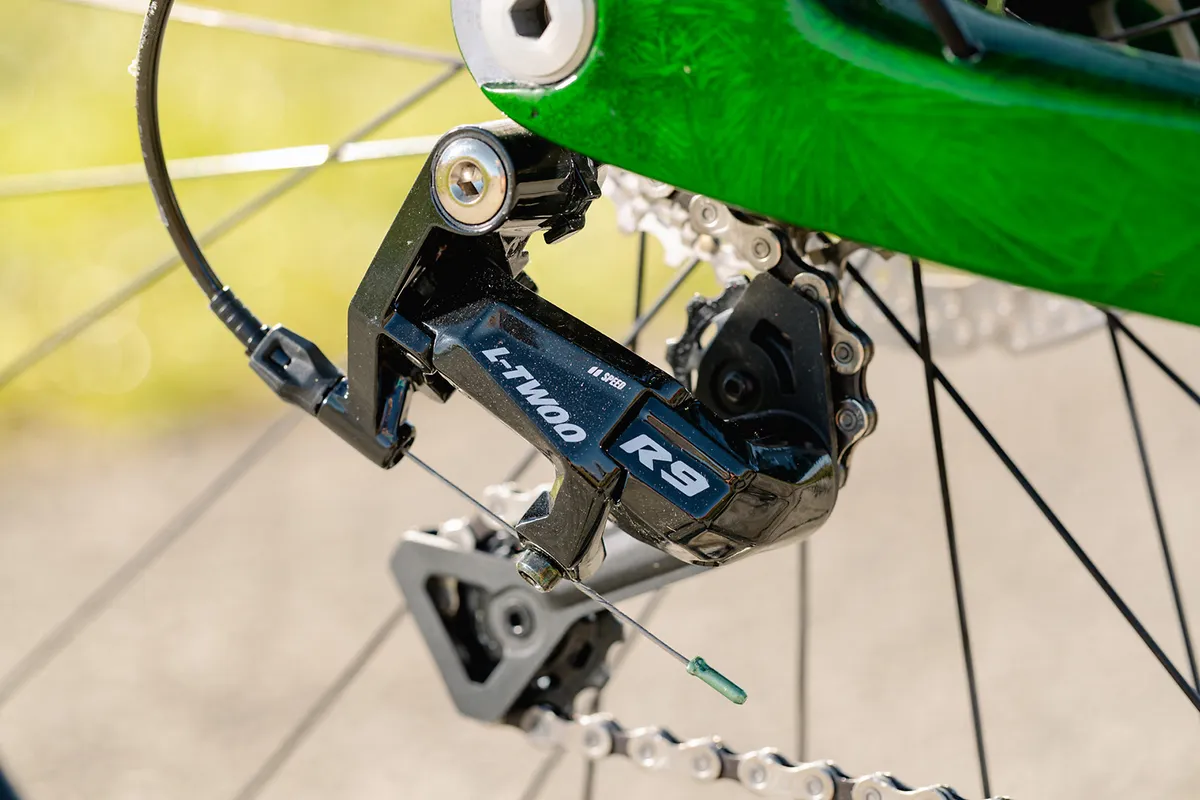
Fundamentally, the drivetrain ‘works’, but shifting certainly isn’t slick or smooth. Compared to Shimano’s mechanical 105 shifting – which you can find on similarly priced bikes (and cheaper) – smoothness and speed of shifting are simply worlds apart.
Although the frameset does bring ample levels of stiffness and comfort, any element of spark is killed by poor wheels and dull tyres.
The unbranded rims are laced with 32 spokes at the front and 36 at the rear to Controltech hubs. The 26.3mm-wide hooked alloy rim has a road-tyre friendly 19mm internal width. It’s not tubeless-ready, though.
The wheels stayed true through testing, but the combined wheel and tyre weight of 1.93kg for the front and 2.21kg for the rear feels as though it kills any acceleration.
The 700 x 28c Kenda Kwest clincher tyres are dull and lifeless; they’re very sluggish, while it's an effort to maintain a decent pace once you get there.
The tyres give very little in the way of compliance when run at my usual pressures. When I ran the pressures low enough to elicit more squish in the sidewalls, it only served to slow down the bike’s tepid acceleration further.
In my experience, this wheel and tyre combination would be shamed on a bike priced at $1,000, never mind close to triple that.
Superstrata Classic bottom line

In all, it's as if Superstrata came up with a flat-barred ebike design, then attempted to turn it into a road bike that looks different. The result is disappointing.
I was excited by a new frame material, an intriguing design plus the new way to make a bike chassis the Superstrata Classic represented.
Unfortunately, it’s a poor-riding bike, thanks largely to being built up with many sub-standard components for the asking price.
Maybe the production method for the frame is excessively expensive (necessitating the choice of componentry), or perhaps the specification choices were made without the availability of parts that are on par with today’s standards. Perhaps it’s a combination of the two.
With the benefit of the doubt, maybe this represents the first (fledgling and flawed) generation of a new way to design and manufacture bikes.
Maybe the next generation will right the wrongs I’ve encountered here, but at this time I sadly can’t recommend the Superstrata Classic.
Product
| Brand | Superstrata |
| Price | $2800.00 |
| Weight | 11.64kg |
Features
| Fork | Thermoplastic |
| Stem | FSA ACR |
| Frame | Thermoplastic |
| Tyres | Kenda Kwest K193 28c tyres |
| Brakes | Pro 5.0 Pass by TUV cable discs 160mm rotors |
| Cranks | RPP 2-piece chainset with 42-tooth chainring |
| Saddle | Selle Italia Model X Boost saddle |
| Wheels | Unbranded, alloy (Controltech hubs) |
| Headset | FSA ACR |
| Cassette | Sunshine 11-28 |
| Seatpost | Control Tech ONE SB10 alloy |
| Handlebar | FSA Energy Compact bars |
| Bottom bracket | Ginyea |
| Rear derailleur | L-Twoo R9 11 speed (42 x 11-28) |
